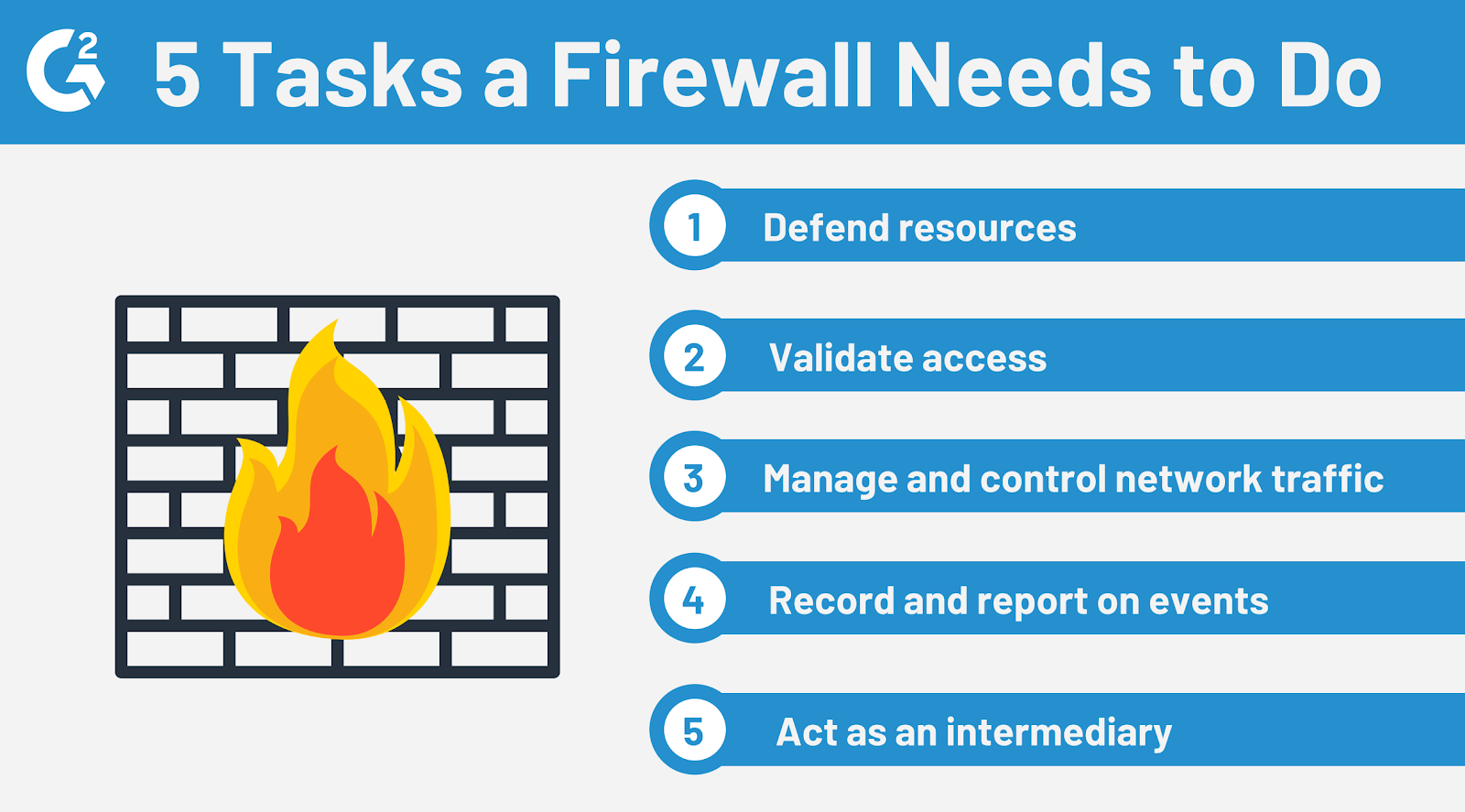In computing, a firewall is a network security system that monitors and controls incoming and outgoing network traffic based on predetermined security rules. A firewall typically establishes a barrier between a trusted network and an untrusted network, such as the Internet.
Firewall History
Firewalls have existed since the late 1980’s and started out as packet filters, which were networks set up to examine packets, or bytes, transferred between computers. Though packet filtering firewalls are still in use today, firewalls have come a long way as technology has developed throughout the decades.
- Gen 1 Virus
- Generation 1, Late 1980’s, virus attacks on stand-alone PC’s affected all businesses and drove anti-virus products.
- Gen 2 Networks
- Generation 2, Mid 1990’s, attacks from the internet affected all business and drove creation of the firewall.
- Gen 3 Applications
- Generation 3, Early 2000’s, exploiting vulnerabilities in applications which affected most businesses and drove Intrusion Prevention Systems Products (IPS).
- Gen 4 Payload
- Generation 4, Approx. 2010, rise of targeted, unknown, evasive, polymorphic attacks which affected most businesses and drove anti-bot and sandboxing products.
- Gen 5 Mega
- Generation 5, Approx. 2017, large scale, multi-vector, mega attacks using advance attack tools and is driving advance threat prevention solutions.
Back in 1993, Check Point CEO Gil Shwed introduced the first stateful inspection firewall, FireWall-1. Fast forward twenty-seven years, and a firewall is still an organization’s first line of defense against cyber attacks. Today’s firewalls, including Next Generation Firewalls and Network Firewalls support a wide variety of functions and capabilities with built-in features, including:
- Network Threat Prevention
- Application and Identity-Based Control
- Hybrid Cloud Support
- Scalable Performance
Types of Firewalls
Packet filtering
A small amount of data is analyzed and distributed according to the filter’s standards.
Proxy service
Network security system that protects while filtering messages at the application layer.
Stateful inspection
Dynamic packet filtering that monitors active connections to determine which network packets to allow through the Firewall.
Next Generation Firewall (NGFW)
Deep packet inspection Firewall with application-level inspection.
What Firewalls Do?
A Firewall is a necessary part of any security architecture and takes the guesswork out of host level protections and entrusts them to your network security device. Firewalls, and especially Next Generation Firewalls, focus on
blocking malware and application-layer attacks, along with an integrated intrusion prevention system (IPS), these Next Generation Firewalls can react quickly and seamlessly to detect and react to outside attacks across the whole network. They can set policies to better defend your network and carry out quick assessments to detect invasive or suspicious activity, like malware, and shut it down.
Why Do We Need Firewalls?
Firewalls, especially Next Generation Firewalls, focus on blocking malware and application-layer attacks. Along with an integrated intrusion prevention system (IPS), these Next Generation Firewalls are able to react quickly and seamlessly to detect and combat attacks across the whole network. Firewallscan act on previously set policies to better protect your network and can carry out quick assessments to detect invasive or suspicious activity, such as malware, and shut it down. By leveraging a firewall for your security infrastructure, you’re setting up your network with specific policies to allow or block incoming and outgoing traffic.
Network Layer vs. Application Layer Inspection
Network layer or packet filters inspect packets at a relatively low level of the TCP/IP protocol stack, not allowing packets to pass through the firewall unlessthey match the established rule set where the source and destination of the rule set is based upon Internet Protocol (IP) addresses and ports. Firewalls that do network layer inspection perform better than similar devices that do application layer inspection. The downside is that unwanted applications or malware can pass over allowed ports, e.g. outbound Internet traffic over web protocols HTTP and HTTPS, port 80 and 443 respectively.
The Importance of NAT and VPN
Firewalls also perform basic network level functions such as Network Address Translation (NAT) and Virtual Private Network (VPN). Network Address Translation hides or translates internal client or server IP addresses that may be in a “private address range”, as defined in RFC 1918 to a public IP address. Hiding the addresses of protected devices preserves the limited number of IPv4 addresses and is a defense against network reconnaissance since the IP address is hidden from the Internet.
Similarly, a virtual private network (VPN) extends a private network across a public network within a tunnel that is often encrypted where the contents of the packets are protected while traversing the Internet. This enables users to safely send and receive data across shared or public networks.
Next Generation Firewalls and Beyond
Next Generation Firewalls inspect packets at the application level of theTCP/IP stack and are able to identify applications such as Skype, or Facebook and enforce security policy based upon the type of application.
Today, UTM (Unified Threat Management) devices and Next Generation Firewalls also include threat prevention technologies such as intrusion prevention system (IPS) or Antivirus to detect and prevent malware and threats. These devices may also include sandboxing technologies to detect threats in files.









إرسال تعليق